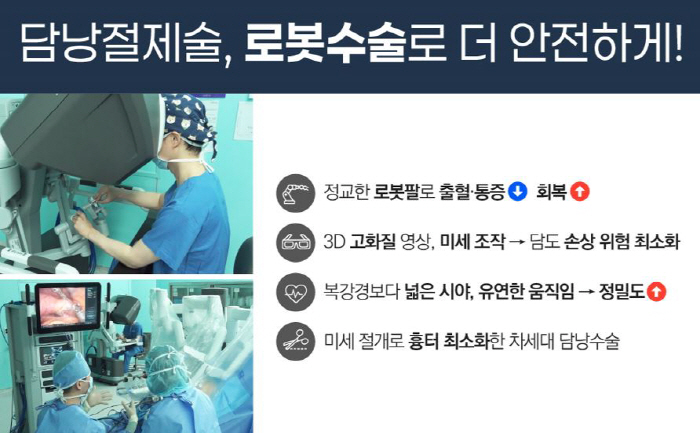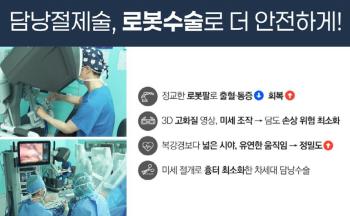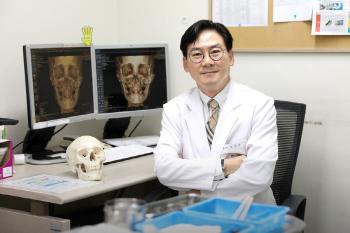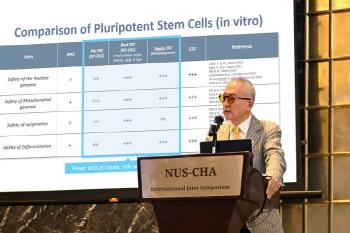Gallbladder disease with few symptoms, robotic surgery reduces pain, scars, and complications
Nov 13, 2025
|
Recently, the precision and stability of surgery have been further strengthened with the proliferation of robotic surgery that supplemented the limitations of existing laparoscopic surgery.
"Robot cholecystectomy is a next-generation surgical method that compensates for the shortcomings of existing open and laparoscopic surgery. It minimizes the risk of bleeding and complications due to fine manipulation without hand tremors, less pain, and faster recovery, greatly reducing the burden on patients," said Lee Byung-mo, a surgeon at H Plus Yangji Hospital.
The gallbladder is a small pouch located under the liver and helps digestion by storing, concentrating, and discharging bile. When stones form in the gallbladder or bile duct, they develop into ' cholelithiasis', when a lump forms in the wall of the gallbladder, ' gallbladder polyps', and when inflammation occurs, ' cholecystitis'. If these inflammations are repeated or chronic, the risk of leading to 'galloid cancer' also increases. Initially, it is easy to be mistaken for asymptomatic or simple indigestion, gastritis, etc. However, if you still have pain in the right upper abdomen, bloating near the solar plexus, and nausea after eating, you should suspect gallbladder disease.
If gallstones are left unattended, they can worsen into cholecystitis, cholangitis, and pancreatitis, so early diagnosis through abdominal ultrasound is important. In addition, fever, chills, and jaundice are also major signs of gallbladder abnormalities, so you should seek medical attention immediately.
Most gallbladder polyps are positive, but cholecystectomy is recommended because cancer is likely to occur when they are large or rapidly grown over 10mm, or when there are high-risk factors such as gallstones, old age, and family history. The key to the treatment of gallbladder disease is 'cholecystectomy'. The gallbladder is removed to prevent the risk of worsening into acute inflammation or cancer, and the biliary tract expands after surgery, so there is no significant disruption to digestion and daily life.
'Robot cholecystectomy' is excellent for high-level cases with anatomical variations, with 3D high-definition images and flexible robotic arm joints that provide three-dimensional precision approach without hand shaking to narrow areas and lower the risk of wide field of view and biliary damage. In addition, after surgery, there is little pain and little scarring is left, so cosmetic satisfaction is high.
In order to maximize the advantages of robotic surgery, you should choose a hospital with an experienced surgeon and a systematic consultation system. If a cooperative system of radiology, gastroenterology, and surgery is established, more accurate diagnosis and organic linkage of procedures, endoscopy, and surgical treatment is possible.
To prevent gallbladder disease, a high-fat diet can cause gallstone formation by increasing cholesterol concentration in the bile, so it is recommended to reduce pork belly and fried foods and eat foods rich in dietary fiber such as vegetables and fruits. Excessive fasting and weight loss should be avoided due to the high risk of gallstone production due to concentration of bile.
Specialist Lee Byung-mo "Recently, the number of young patients with gallbladder disease in their 20s and 40s is increasing due to wrong eating habits and excessive diet."They prefer quick recovery and minimal scarring, which is a trend that gradually increases the demand for robotic surgery."
|
This article was translated by Naver AI translator.















